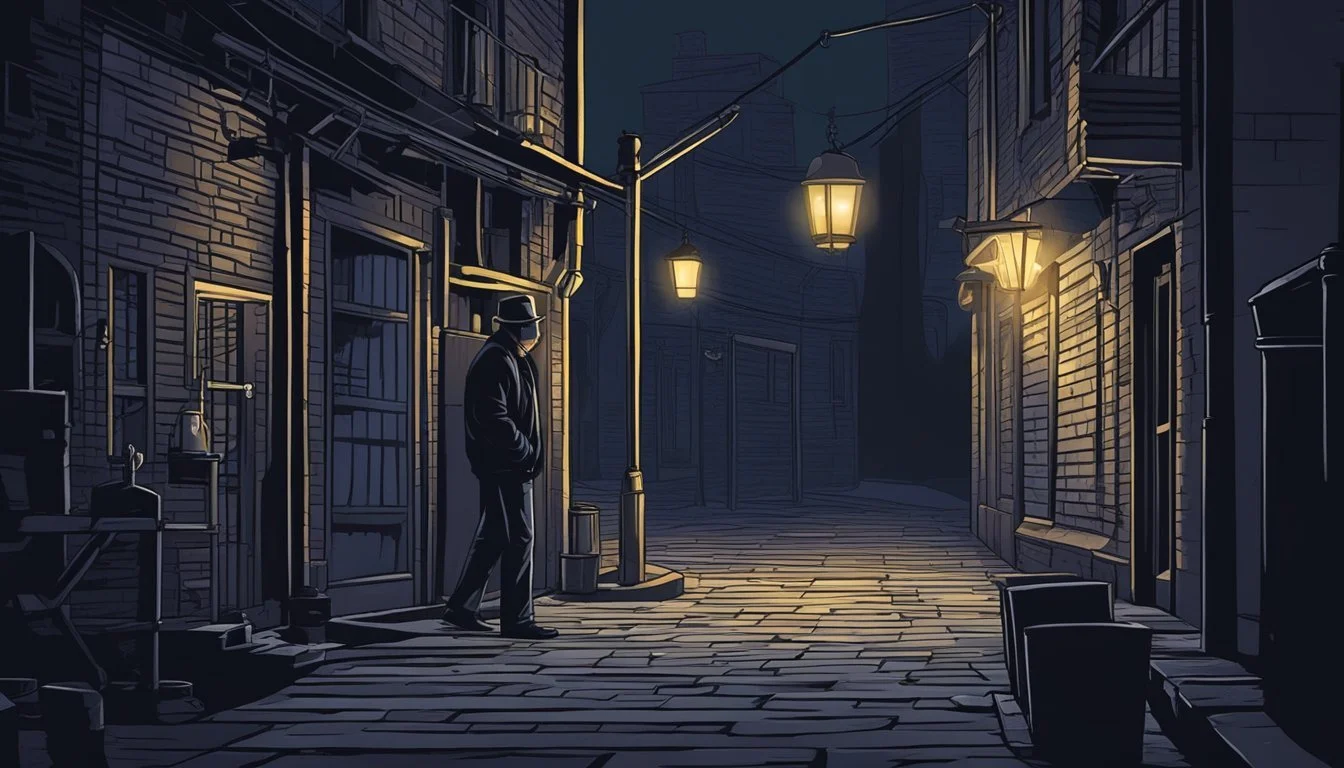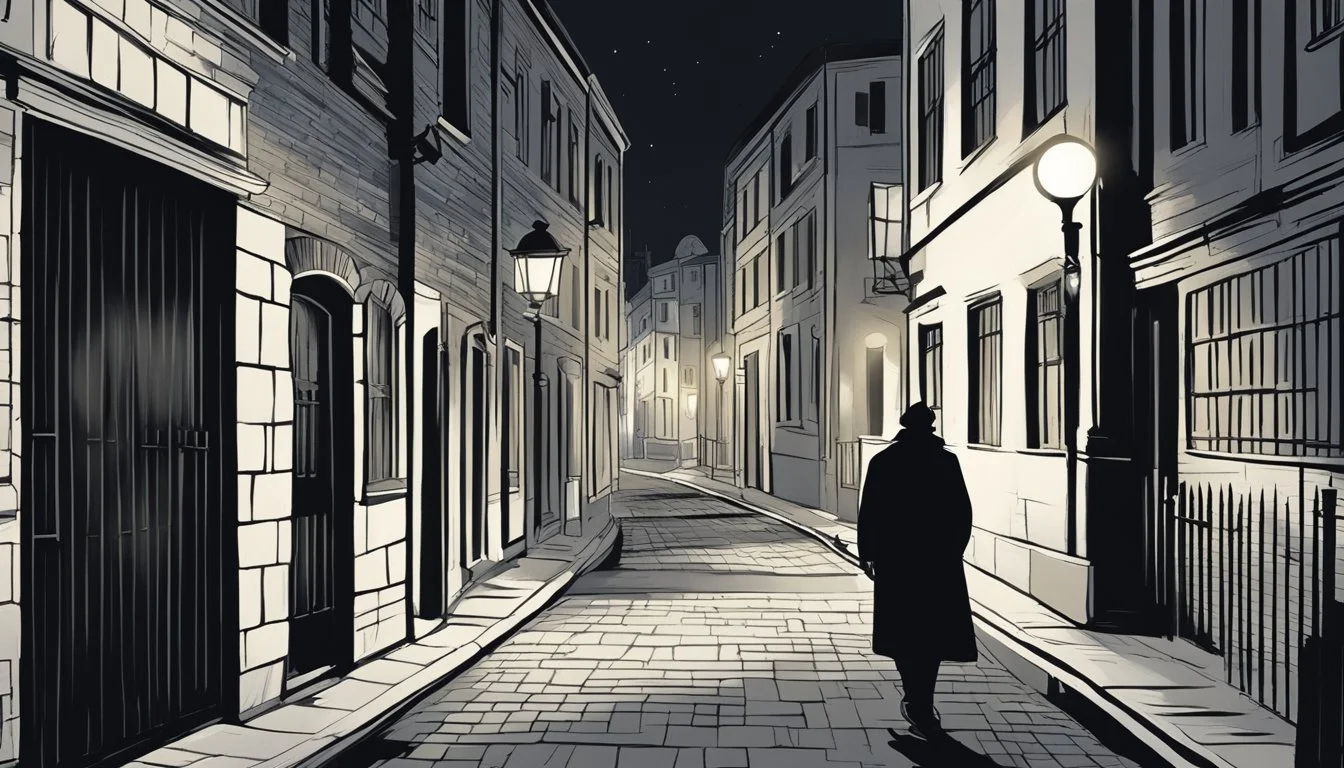Carroll Edward Cole: 5 Disturbing Documentaries on the Barfly Strangler
Chilling Insights into a Serial Killer's Mind
Carroll Edward Cole, known as the "Barfly Strangler," was a prolific serial killer who terrorized multiple states across America in the 1970s and early 1980s. His crimes left a trail of victims from California to Wyoming, with many of his targets being women he encountered in bars.
Documentaries exploring Cole's disturbing life and crimes offer viewers a chilling glimpse into the mind of a serial killer. These films delve into Cole's troubled upbringing, his struggles with mental health, and the horrific acts he committed. By examining Cole's case, audiences can gain insights into the complex factors that contribute to the development of a serial killer.
1) The Gruesome Diary of the Barfly Strangler
Carroll Edward Cole's chilling diary provides a disturbing glimpse into the mind of the infamous Barfly Strangler. This documentary explores the contents of Cole's personal writings, revealing his twisted thoughts and motivations.
The film delves into Cole's troubled childhood and the development of his murderous tendencies. It examines how his abusive upbringing and early experiences shaped his violent behavior later in life.
Viewers are confronted with Cole's graphic descriptions of his crimes, including details of how he selected and approached his victims. The documentary highlights the psychological toll of his actions on both himself and those around him.
Experts analyze Cole's diary entries, offering insights into his mental state and the progression of his criminal activities. The film also touches on Cole's attempts to seek help and the failures of the mental health system to intervene.
Through interviews with investigators and archival footage, the documentary paints a comprehensive picture of Cole's reign of terror. It explores how he managed to evade capture for so long despite his frequent encounters with law enforcement.
2) Dark Alley: The Secrets of the Barfly Strangler
"Dark Alley: The Secrets of the Barfly Strangler" offers viewers a chilling glimpse into the life and crimes of Carroll Edward Cole. This documentary explores Cole's troubled childhood and his descent into alcoholism and violence.
The film examines Cole's modus operandi, detailing how he frequented bars to find his victims. It recounts his encounters with women like Dorothy King, Wanda Roberts, and Sally Thompson, whom he strangled after luring them with promises of companionship.
Interviews with law enforcement officials provide insight into the investigation that led to Cole's capture. The documentary also features archival footage and crime scene photographs, giving viewers a stark look at the aftermath of Cole's crimes.
Experts analyze Cole's psychology, discussing the factors that may have contributed to his violent behavior. The film touches on his claims of killing numerous women across multiple states, highlighting the challenges of verifying his confessions.
"Dark Alley" presents a balanced view of Cole's case, including his eventual execution in Nevada. It raises questions about the justice system's handling of serial killers and the impact of childhood trauma on adult behavior.
3) Catching a Monster: The Barfly Strangler's Capture
Carroll Edward Cole's reign of terror came to an end in 1980 when he was arrested in Dallas, Texas. Cole had been living a transient lifestyle, drifting from state to state and leaving a trail of victims in his wake.
The breakthrough in the case came when Cole confessed to murdering a woman in Las Vegas. This confession led to further investigations and the uncovering of additional victims across multiple states.
Law enforcement agencies from California, Nevada, Texas, Wyoming, and Oklahoma collaborated to piece together Cole's extensive criminal history. As the investigation progressed, Cole's pattern of targeting women in bars became evident, earning him the moniker "The Barfly Strangler."
Cole's capture highlighted the challenges of tracking serial killers who moved frequently across state lines. His case underscored the importance of inter-agency cooperation in apprehending dangerous criminals.
Following his arrest, Cole confessed to numerous murders, providing closure to many unsolved cases. His willingness to admit to his crimes simplified the legal proceedings and ultimately led to his conviction and execution in Nevada in 1985.
4) Urban Legends: The Truth About the Barfly Strangler
Carroll Edward Cole's crimes spawned several urban legends. Some claim he targeted only women who reminded him of his mother, but this is an oversimplification of his victim selection.
Another myth suggests Cole always confessed immediately after each murder. In reality, he often evaded detection for years before admitting to his crimes.
The nickname "Barfly Strangler" itself has been exaggerated in popular culture. While Cole did frequent bars, not all his victims were met in such establishments.
Some accounts inflated Cole's victim count to over 35. Official records confirm 16 murders, though the true number may be higher.
Contrary to some reports, Cole did not always seek mental health treatment before his crimes. He occasionally attempted to get help, but this was not a consistent pattern.
The idea that Cole only operated in one geographic area is false. His crimes spanned multiple states, including California, Nevada, and Texas.
5) Inside the Mind of the Barfly Strangler
"Inside the Mind of the Barfly Strangler" offers a chilling psychological profile of Carroll Edward Cole. The documentary delves into Cole's troubled childhood and the factors that shaped his murderous behavior.
Experts analyze Cole's relationship with his abusive mother and how it influenced his later victim selection. The film explores his early violent tendencies, including his first murder at a young age.
Cole's struggles with alcoholism and mental health issues are examined in detail. The documentary highlights his attempts to seek psychiatric help and the systemic failures that left him untreated.
Interviews with law enforcement and mental health professionals provide insights into Cole's modus operandi and motivations. The film paints a disturbing picture of a man driven by rage and compulsion.
Through reenactments and archival footage, viewers gain a haunting glimpse into the mind of one of America's most prolific serial killers. The documentary serves as a stark reminder of the complex factors behind such heinous crimes.
The Life and Crimes of Carroll Edward Cole
Carroll Edward Cole was a prolific American serial killer who confessed to murdering 35 people between 1948 and 1980. His troubled childhood and psychological issues played a significant role in shaping his criminal behavior.
Early Life and Background
Carroll Edward Cole was born on May 9, 1938, in Sioux City, Iowa. He was the second son of LaVerne and Vesta Cole. In 1939, the family welcomed a daughter and subsequently moved to Richmond, California.
Cole's father found work in local shipyards before being drafted to serve in World War II. This absence proved pivotal in young Carroll's development.
During his formative years, Cole witnessed his mother's infidelity. This experience deeply affected him, fostering intense feelings of anger and resentment towards women.
Cole's criminal behavior began early. By age 8, he had already attempted to drown a classmate. This incident marked the beginning of his violent tendencies.
Psychological Analysis
Cole's psychological issues stemmed from a combination of childhood trauma and innate tendencies. His mother's infidelity played a crucial role in shaping his attitudes towards women.
Experts believe Cole suffered from antisocial personality disorder. This condition manifested in his lack of empathy, disregard for social norms, and impulsive behavior.
Cole's alcoholism exacerbated his violent tendencies. He often targeted women in bars, earning him the moniker "Barfly Strangler."
His method of killing - strangulation - reflected a desire for control and dominance over his victims. This pattern is common among serial killers with similar psychological profiles.
Cole's confessions revealed a deep-seated hatred for women, rooted in his childhood experiences. This misogyny fueled his murderous spree, targeting primarily female victims.
Impact of Documentaries on Public Perception
Documentaries about serial killers like Carroll Edward Cole can significantly shape public understanding of criminal cases and the justice system. They provide in-depth looks at complex issues, but also raise questions about responsible media coverage.
Influence on Criminal Justice Awareness
Crime documentaries have increased public interest in criminal justice processes. They often highlight investigative techniques, legal proceedings, and systemic issues within law enforcement and courts. This exposure can lead to greater civic engagement and calls for reform.
Some documentaries have even aided in reopening cold cases or exonerating wrongfully convicted individuals. The attention generated by these films can pressure authorities to reexamine evidence and pursue new leads.
However, the dramatization of crimes in documentaries may also skew perceptions of crime rates and justice system effectiveness. Viewers may overestimate the prevalence of certain types of crimes or develop unrealistic expectations about forensic capabilities.
Ethical Considerations in True Crime Media
The production of true crime documentaries raises ethical concerns about victim exploitation and sensationalism. Filmmakers must balance the public's right to information with respect for victims and their families.
Some argue these films can retraumatize survivors or glorify perpetrators. Others contend they serve an important role in educating the public and advocating for justice.
Responsible documentarians strive to present balanced accounts, avoiding lurid details and focusing on factual information. They may consult with criminologists and psychologists to provide context and avoid perpetuating harmful stereotypes.
Ethical true crime media can foster empathy for victims and highlight societal factors contributing to criminal behavior. This approach encourages viewers to consider complex issues beyond simple narratives of good and evil.
In-Depth Analysis of Each Documentary
Documentary 1: "The Barfly Killer" This film explores Cole's troubled childhood and how it shaped his murderous tendencies. It features interviews with criminal psychologists who analyze Cole's motives and behavior patterns.
Documentary 2: "Confessions of a Serial Killer" Focusing on Cole's own words, this documentary uses audio recordings and written confessions to provide insight into his mindset. It examines the inconsistencies in his statements and the evolving nature of his admissions.
Documentary 3: "Victims of the Barfly Strangler" This documentary takes a victim-centered approach, telling the stories of those who lost their lives to Cole. It includes interviews with family members and explores the lasting impact of his crimes on communities.
Documentary 4: "Behind the Bar: The Hunt for Carroll Cole" Detailing the investigation process, this film showcases the challenges law enforcement faced in tracking Cole across multiple states. It highlights the evolving forensic techniques used to link his crimes.
Documentary 5: "The Mind of a Killer: Carroll Cole's Psychology" This in-depth psychological profile examines Cole's claims of childhood abuse and his attempts to seek mental health treatment. It features expert analysis of his behavior and explores the debate surrounding his mental state during his crimes.





